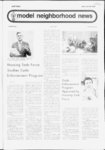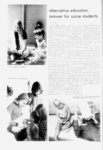Salt Lake Model Neighborhood News | 1972-04-06 | Page 1
| Type | issue |
| Date | 1972-04-06 |
| Paper | Salt Lake Model Neighborhood News |
| Language | eng; spa |
| City | Salt Lake City |
| County | Salt Lake |
| Rights | No Copyright - United States (NoC-US) |
| Publisher | Digitized by J. Willard Marriott Library, University of Utah |
| ARK | ark:/87278/s67t32bd |
| Reference URL | https://newspapers.lib.utah.edu/ark:/87278/s67t32bd |
Page Metadata
| Type | page |
| Date | 1972-04-06 |
| Paper | Salt Lake Model Neighborhood News |
| Language | eng; spa |
| City | Salt Lake City |
| County | Salt Lake |
| Page | 1 |
| Reference URL | https://newspapers.lib.utah.edu/ark:/87278/s67t32bd/28456814 |










